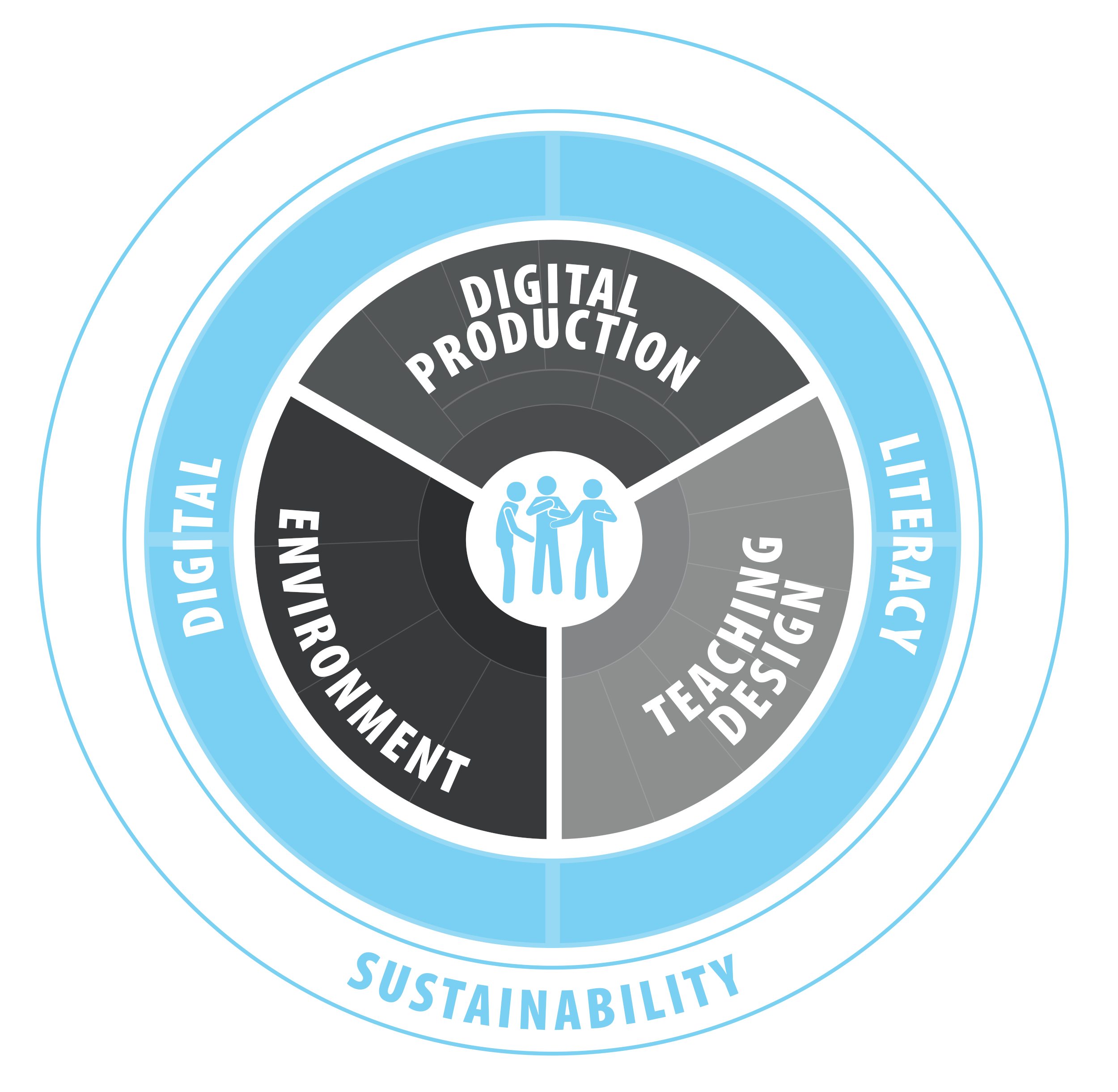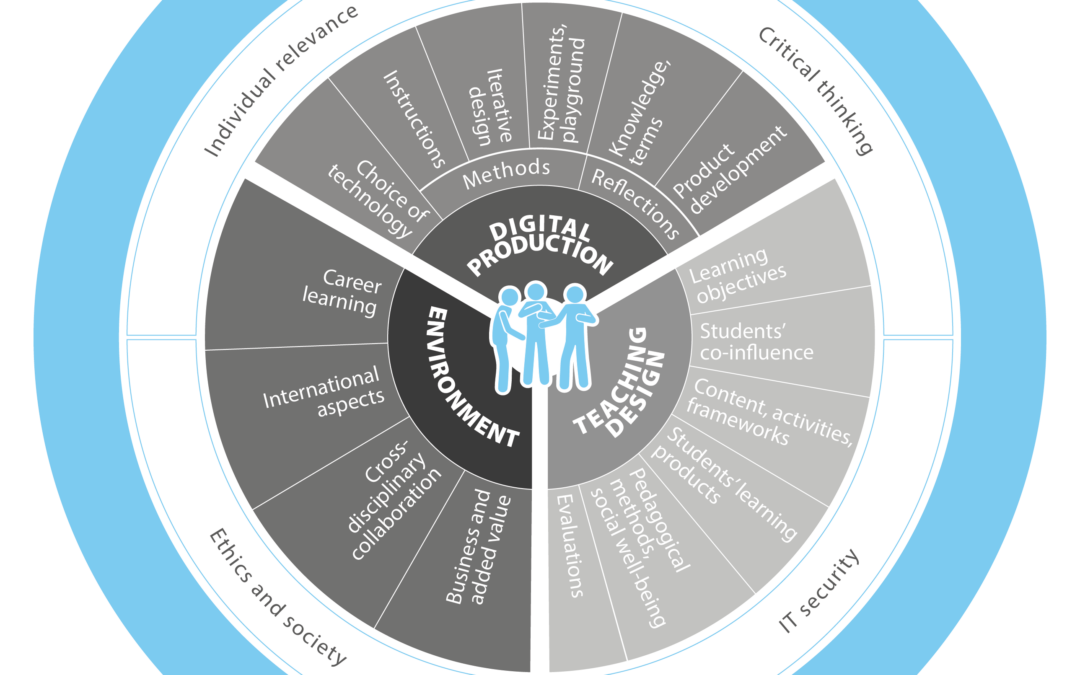Teaching with digital production
Exploring new technologies for teaching and learning purposes requires careful didactic and pedagogical consideration. This becomes even more important when planning for long-term implementation in curricula and disseminating the new concepts. Moreover, when collaborating with emerging technologies across educational levels and sectors, a mutual understanding and a shared language about didactics are essential.
Moeve has been involved in facilitating the processes underlying the development of a tech-didactic model and has contributed through data processing and coordination for the graphic design.
From ROBOdidactics to DigiDidactics
The ROBOdidactics model had been developed, tested, and reviewed across various educational organizations and levels during a series of projects in Southern Denmark (2018–2022).
In parallel and in the following years, the model was applied to teaching contexts requiring specific tech-didactics, while further research was conducted.
Meanwhile, new themes emerged, making it increasingly urgent to integrate these aspects. First and foremost, the need to think and act sustainably—also in relation to digital technologies—became more pressing. Additionally, globalization and the growing demand for engaging with new technologies in cross-border collaborations gained importance.
Finally, ROBOdidactics required a thorough review from fresh perspectives, as the model was quite complex, with a relatively steep learning curve for newcomers to tech-didactics.







DigiDidactics (Nov. 2024)
The tech-didactic model DigiDidactics emerged from a thorough, user-involving process during the autumn of 2024. This process incorporated essential and inescapable principles that had also been fundamental to ROBOdidactics:
The model should maintain its user-generated and user-directed approach, with a student-centered emphasis.
The redesign should be data-driven and experience-based, as reflected in the teaching modules.
The model should be meaningful for all target groups across the ´education chain´, and, as a new feature, across the Danish-German border.
The DigiDidactics model shares the same mission as the ROBOdidactics model did:
- To raise awareness among teachers and managers about the different dimensions of teaching with digital production and to provide inspiration within each of these dimensions.
- To support teachers and managers across subjects, educational levels, sectors, and country borders in communicating about their teaching.
- To facilitate evaluations and peer feedback to identify areas for further development.

